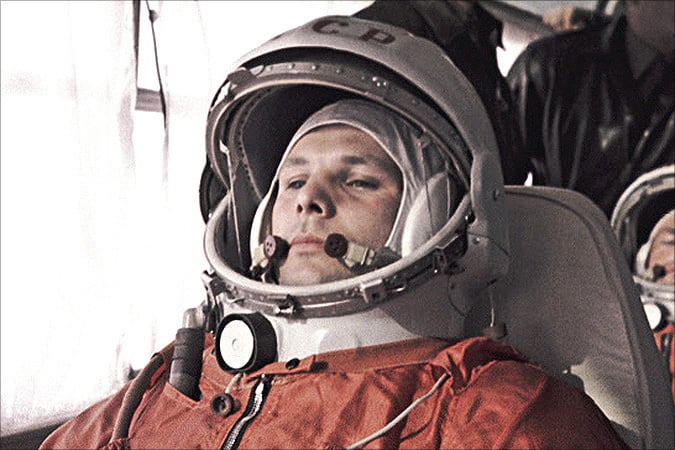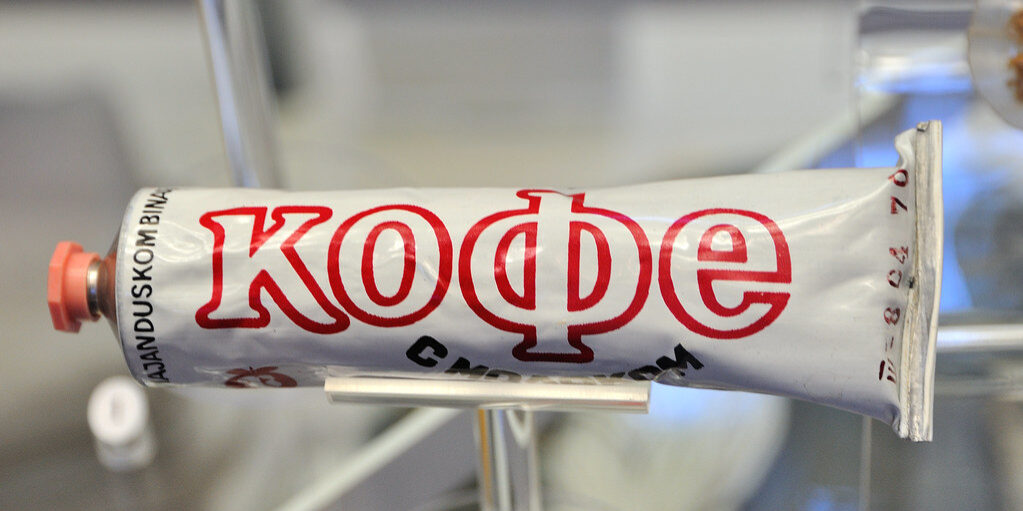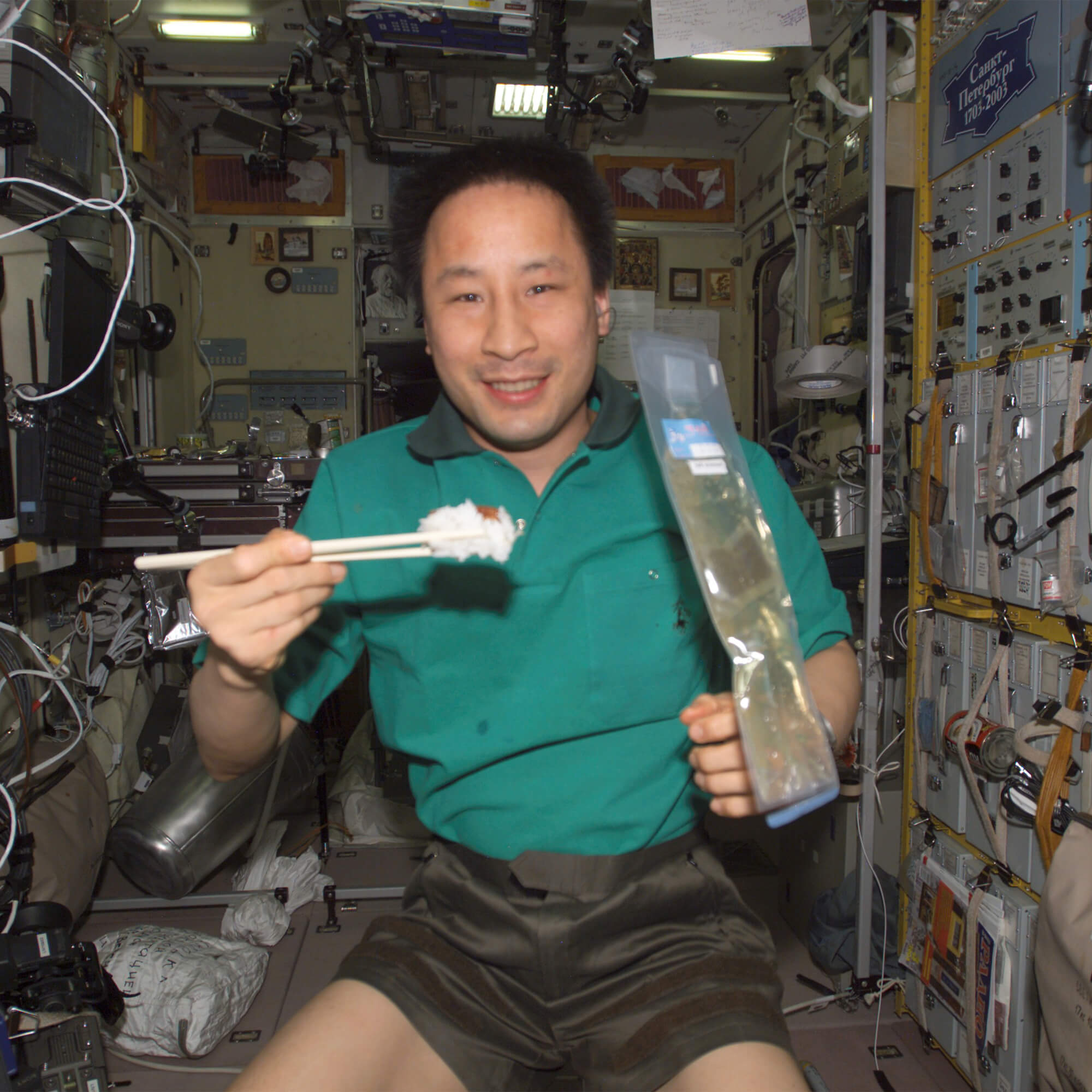When the Soviet Union’s Yuri Gagarin (pictured) became the first human in space, he took along and ate the first meal in space: two servings of pureed meat and one of chocolate sauce – all in the yummy form of paste he squeezed from tubes, just like toothpaste!
The early Mercury astronauts took along freeze-dried food in powdered form and bite-sized cubes, which they did not enjoy trying to rehydrate and eat.
Eventually, tubes were ousted and menus started consisting of more normal food items that humans enjoy. For Project Gemini during the mid-1960s, improved freeze-drying methods permitted luxuries such as shrimp cocktail, toast, chicken and vegetables and pudding.
The variety of food options continued to expand for the Apollo missions. The new availability of hot water made rehydrating freeze-dried foods simpler, and produced a more appetizing result. The “spoon-bowl” allowed more normal eating practices. Food could be kept in special plastic zip-closure containers, and its moisture allowed it to stick to a spoon.


Today’s U.S. space food almost exclusively uses the same kind of packaging used for the military’s Meals, Ready to Eat (MRE) kits, or the room-temperature tuna pouches you can buy in a grocery store.
Dehydrated foods are still used, as are foods that are thermostabilized or irradiated and can be served right out of the package – just heat and eat. Dozens of possible menu items range from meatloaf with mashed potatoes and gravy to coconut cream pie. Today, anything that can be kept at room temperature can be eaten on board a spacecraft, including pasta, fruit and other popular foods from home.
International Variety
Every country that travels into space brings along the food its citizens enjoy.
Russian foods are preserved the same way as U.S. foods, but are packaged differently, many in cans. The Russian space program has about 100 different food items – with some definite cultural differences. In the U.S., we might eat eggs and bacon for breakfast, whereas the Russians traditionally like fish products for breakfast, such as pickled or spiced perch. Other popular Russian space foods include a variety of soups, lamb with vegetables, sturgeon, borsch, goulash, curds and nuts. When China launched into orbit in 2003 for the first time, Yang Liwei brought yuxiang pork, Kung Pao chicken, rice and Chinese herbal tea. Japan sends sushi, ramen, yokan and rice with ume for its astronauts.


Snacks and Tang!
The International Space Station stocks an assortment of dried fruit, animal and goldfish crackers, cookies, potato chips, Rice Krispies® treats, candy-coated chocolates, Life Savers candy and gum for snacks.
Contrary to popular belief, Tang was not invented by NASA or for space travel. But it did become a household name after it was used by the early Mercury, Gemini and Apollo astronauts to make the water that was produced in space taste much better.
Classifications of Space Food
Beverages
Dehydrated of course
Fresh Foods
Food with a two-day shelf life
Irradiated Meat
To keep it from spoiling
Intermediate Moisture
Foods that won’t go bad as quickly as fresh foods
Natural Form
Nuts, cookies, granola bars, etc.
Rehydratable Foods
Food that can be reconstituted with water
Thermostabilized
Prepared with heat to kill off possible spoiling agents
Current Space Food on Display
The Russian and U.S. space food on display in the El Pomar Space Gallery was donated by NASA astronaut Col. Michael Good, USAF, Ret., from his days aboard the Space Shuttle and the International Space Station.
Food eaten on space missions today is more sophisticated – and much tastier – than Apollo-era space food.
For more information, click here.

